
Check digit:
- The digits in the number are added together, and the unit digit of the result is called as check digit, which is used for error detection.
- The unit’s digit of that sum is stored with the number.
- The additional digit is used along with the check digit to find out the transposition error, and it can be found out by the sum of even digits or odd digits in the number.
For example,
Consider the number 3422.
Count the numbers from left to right; it produces the sum of the digits as 11. It is stored as 3422-15.
- Here, “1” is the unit’s digit of the sum of all the digits, which is called as check bit.
- “5” is the unit’s digit of the sum of the first and third digits (3+2 =5), which is the additional digit used along with the check digit.
- While storing the above number 3422-15, if “2” is corrupted by “4” and “4” is corrupted by “2”, it leads to a transposition error.
- So, the number is received as 3242-15.
- By adding the number, it produces the check digit as “1” and it produces the additional digit as “7”.
- But the received additional digit is “5”. Hence, it is clear that the received number is corrupted.
- So, the number is received as 3242-15.
Explanation of Solution
a.
Find the additional digit using the sum of odd digits for “1066” numbers:
The additional digit (using the sum of odd digits) for the number 1066 can be determined by the following steps:
Check digit:
- Step 1: Count the given number from left to right.
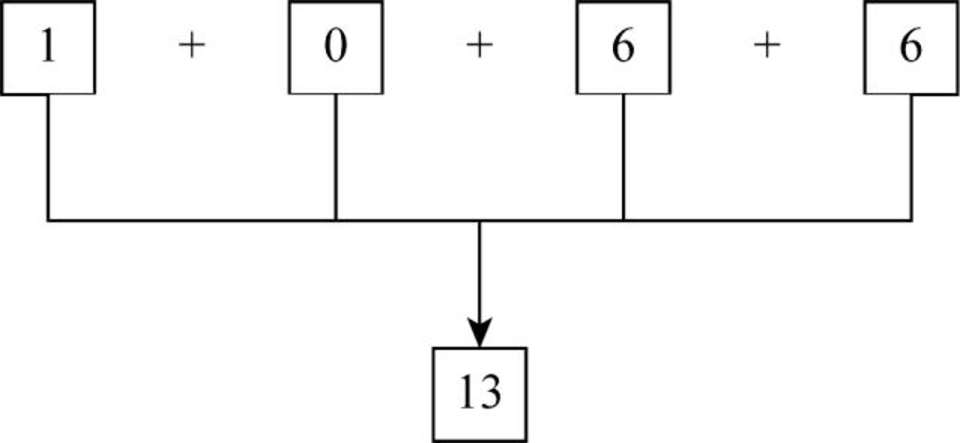
- Step 2: From the above diagram, the sum of digits produces the result as 13.
- Step 3: The unit’s place in the sum represents the check digit. Thus, “3” is in the unit’s place.
- Step 4: Therefore, check digit for the number 1066 is 3.
Additional digit:
- Step 1: In the given number 1066, take the numbers from the odd position from left to right.
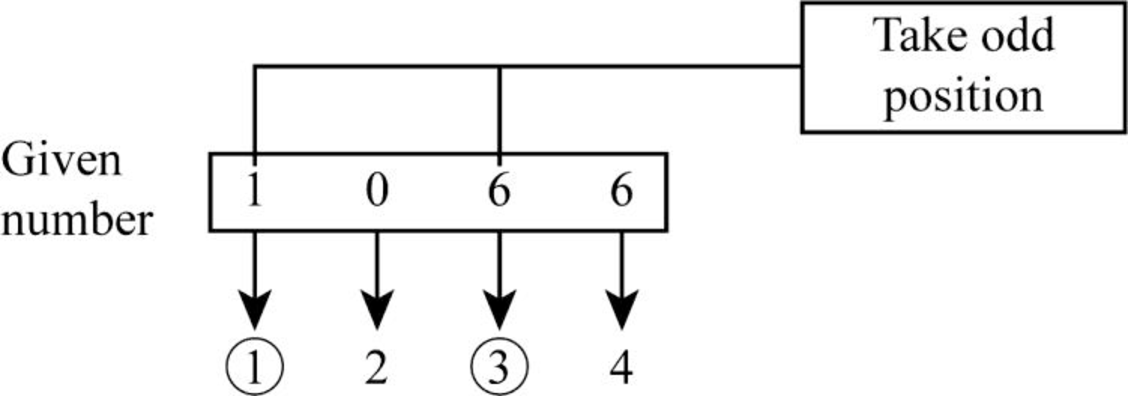
- Step 2: From the above diagram, it is clear that the number “1” on first position and the number “6” on third position are the odd position numbers.
- Step 3: The sum of digits produces the result as “7” (1+6 = 7).
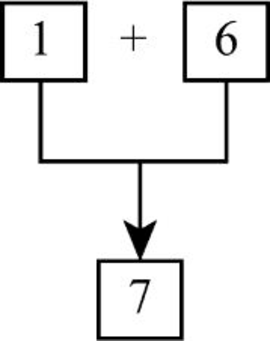
- Step 4: Hence, “7” in the unit’s place is the additional digit used along with the check digit.
Therefore, additional digit used along with the check digit “3” for the number 1066 is “7”.
Explanation of Solution
b.
Find the additional digit using the sum of odd digits for “1498” numbers:
The additional digit (using the sum of odd digits) for the number 1498 can be determined by the following steps:
Check digit:
- Step 1: Count the given number from left to right.
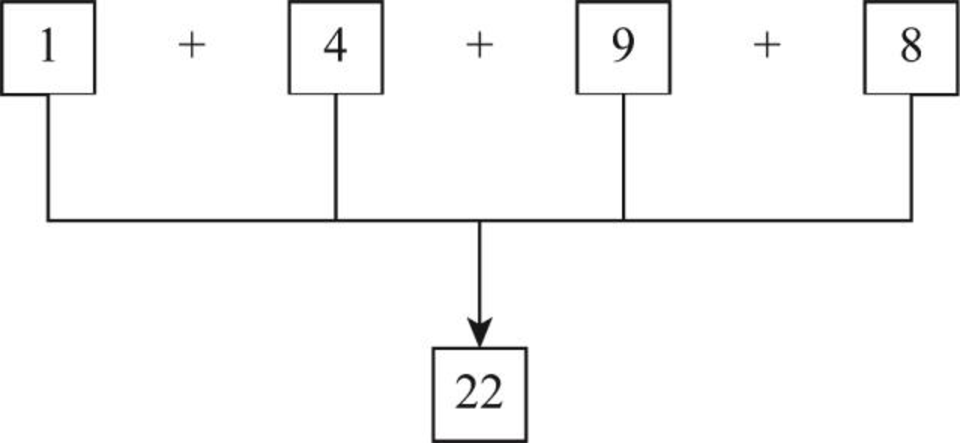
- Step 2: From the above diagram, the sum of digits produces the result as 22.
- Step 3: The unit’s place in the sum represents the check digit. Thus, “2” is in the unit’s place.
- Step 4: Therefore, check digit for the number 1498 is 2.
Additional digit:
- Step 1: In the given number 1498, take the numbers from the odd position from left to right.
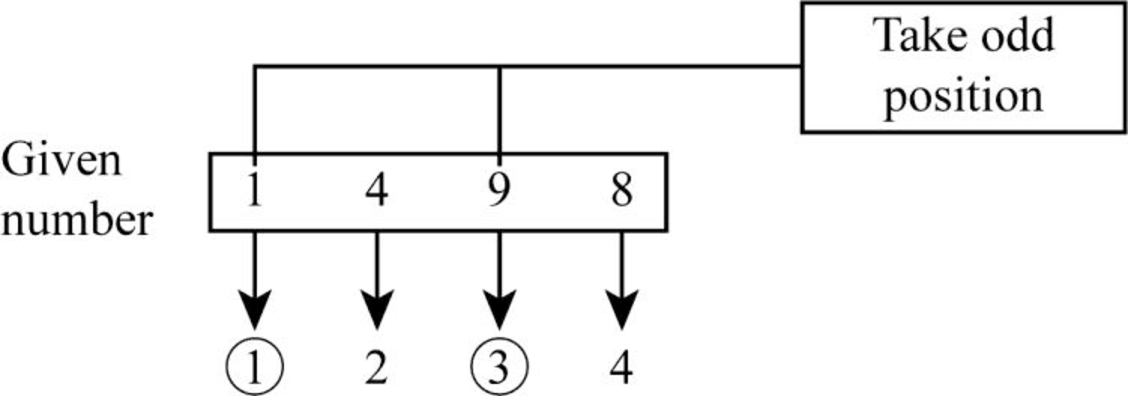
- Step 2: From the above diagram, it is clear that the number “1” on first position and the number “9” on third position are the even position numbers.
- Step 3: The sum of digits produces the result as “10” (1+9 = 10).
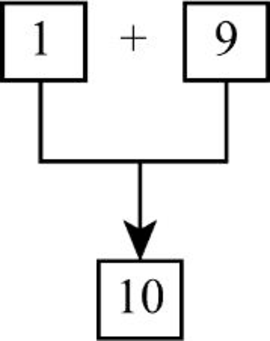
- Step 4: Hence, “0” in the unit’s place is the additional digit used along with the check digit.
Therefore, additional digit used along with the check digit “2” for the number 1498 is “0”.
Explanation of Solution
c.
Find the additional digit using the sum of odd digits for “1668” numbers:
The additional digit (using the sum of odd digits) for the number 1668 can be determined by the following steps:
Check digit:
- Step 1: Count the given number from left to right.
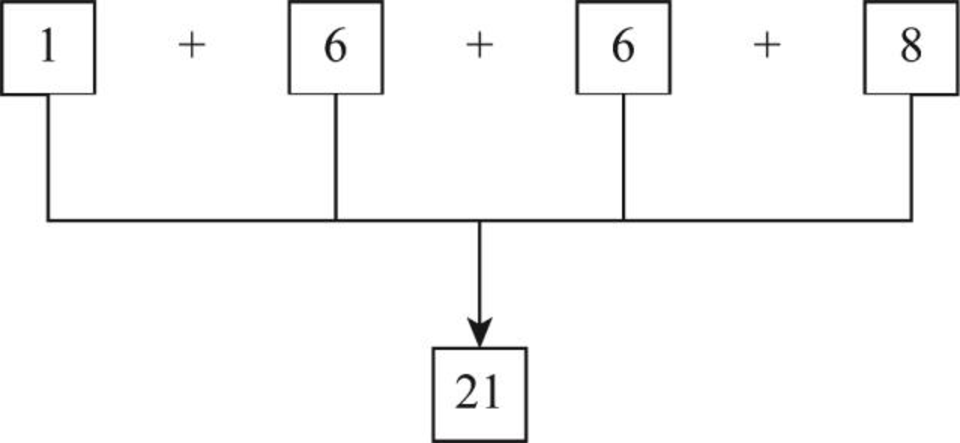
- Step 2: From the above diagram, the sum of digits produces the result as 21.
- Step 3: The unit’s place in the sum represents the check digit. Thus, “1”is in the unit’s place.
- Step 4: Therefore, the check digit for the number 1668 is 1.
Additional digit:
- Step 1: In the given number 1668, take the numbers from the odd position from left to right.
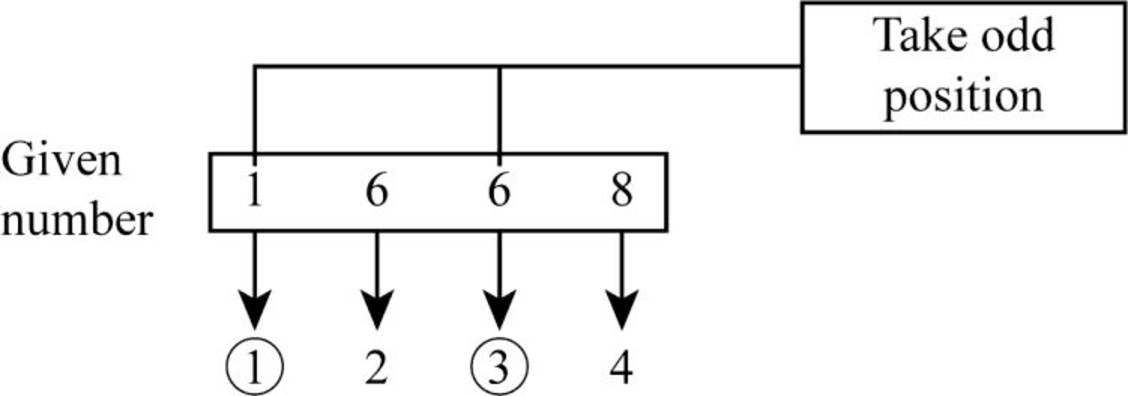
- Step 2: From the above diagram, it is clear that the number “1” on first position and the number “6” on third position are the even position numbers.
- Step 3: The sum of digits produces the result as “7” (1+6 = 7).

- Step 4: Hence, “7” in the unit’s place is the additional digit used along with the check digit.
Therefore, additional digit used along with the check digit “1” for the number 1668 is “7”.
Explanation of Solution
d.
Find the additional digit using the sum of odd digits for “2001” numbers:
The additional digit (using the sum of odd digits) for the number 2001 can be determined by the following steps:
Check digit:
- Step 1: Count the given number from left to right.
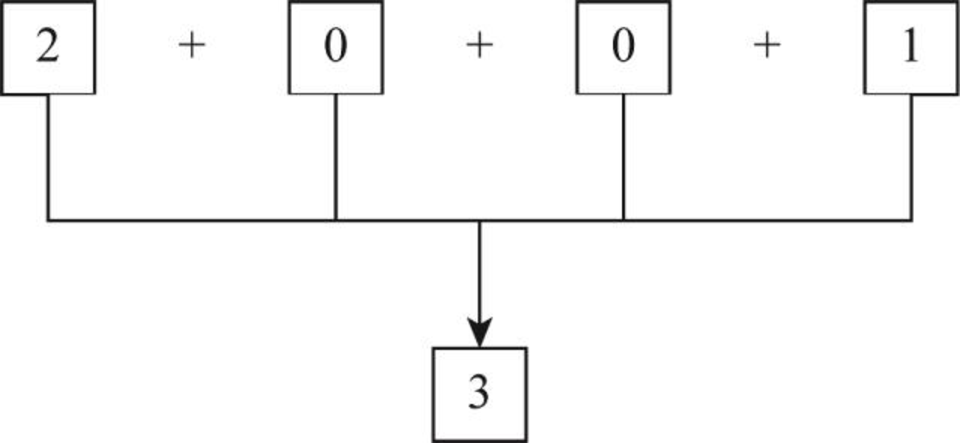
- Step 2: From the above diagram, the sum of digits produces the result as 3.
- Step 3: The unit’s place in the sum represents the check digit. Thus, “3” is in the unit’s place.
- Step 4: Therefore, check digit for the number 2001 is 3.
Additional digit:
- Step 1: In the given number 2001, take the numbers from the odd position from left to right.
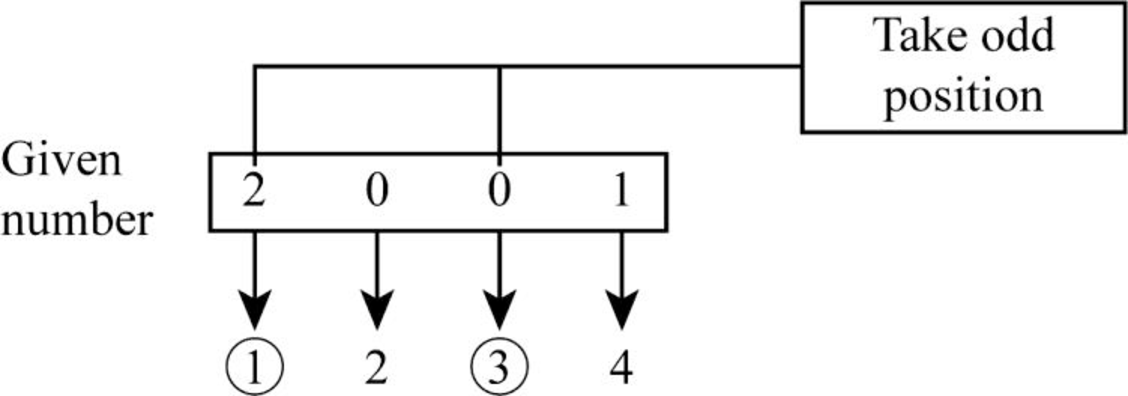
- Step 2: From the above diagram, it is clear that the number “2” on first position and the number “0” on third position are the even position numbers.
- Step3: The sum of digits produces the result as “2” (2+0 = 2).
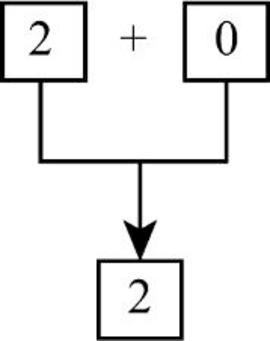
- Step 4: Hence, “2” in the unit’s place is the additional digit used along with the check digit.
Therefore, additional digit used along with the check digit “3” for the number 2001 is “2”.
Explanation of Solution
e.
Find the additional digit using the sum of odd digits for “4040” numbers:
The additional digit (using the sum of odd digits) for the number 4040 can be determined by the following steps:
Check digit:
- Step 1: Count the given number from left to right.
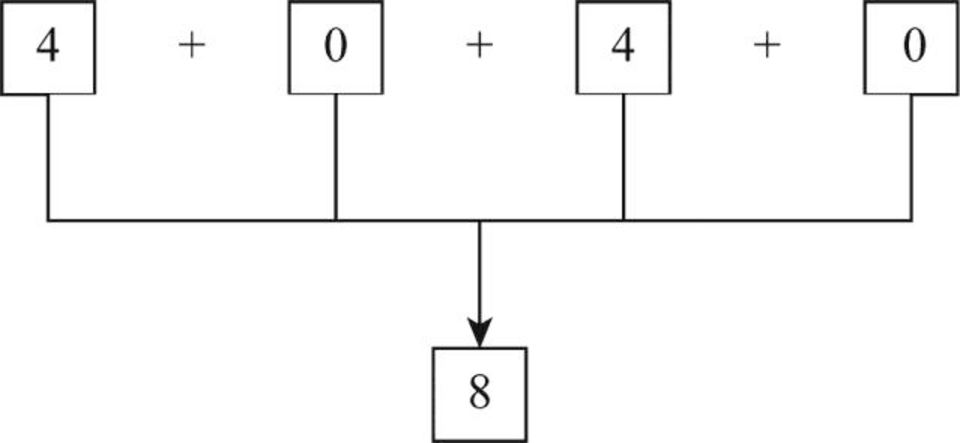
- Step 2: From the above diagram, the sum of digits produces the result as 8.
- Step3: The unit’s place in the sum represents the check digit. Thus, “8” is in the unit’s place.
- Step 4: Therefore, check digit for the number 4040 is 8.
Additional digit:
- Step 1: In the given number 4040, take the numbers from the odd position from left to right.
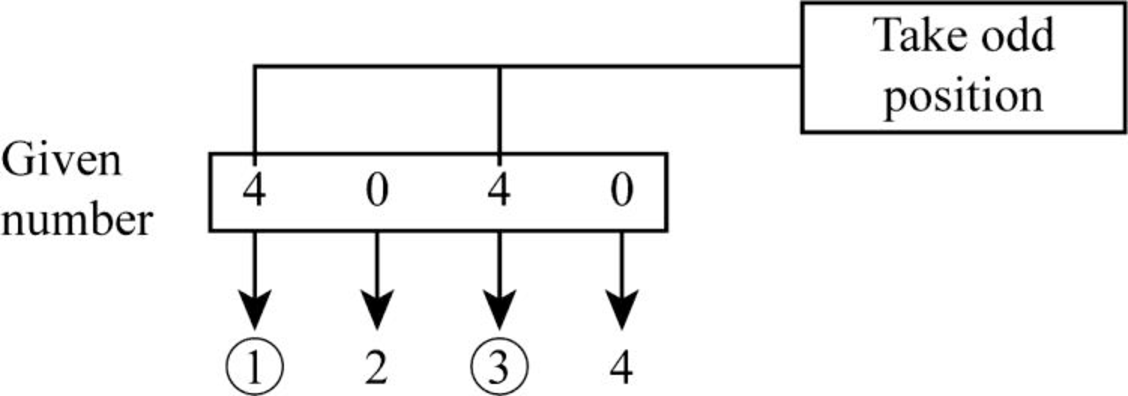
- Step 2: From the above diagram, it is clear that the number “4” on first position and the number “0” on third position are the even position numbers.
- Step3: The sum of digits produces the result as “4” (4+4 = 8).
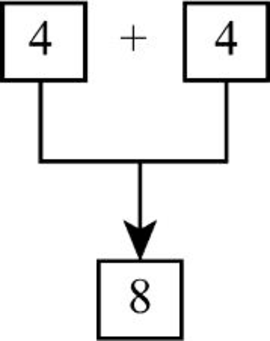
- Step4: Hence, “4” in the unit’s place is the additional digit used along with the check digit.
Therefore, additional digit used along with the check digit “8” for the number 4040 is “8”.
Want to see more full solutions like this?
Chapter 18 Solutions
COMPUTER SCIENCE ILLUMIN.-TEXT
- Solve this "Do not use AI tools. Solve the problem by hand on paper only and upload a photo of your handwritten solution."arrow_forwardSolve this "Do not use AI tools. Solve the problem by hand on paper only and upload a photo of your handwritten solution."arrow_forwardSolve this "Do not use AI tools. Solve the problem by hand on paper only and upload a photo of your handwritten solution."arrow_forward
- Solve this "Do not use AI tools. Solve the problem by hand on paper only and upload a photo of your handwritten solution."arrow_forwardSolve this "Do not use AI tools. Solve the problem by hand on paper only and upload a photo of your handwritten solution."arrow_forwardSolve this "Do not use AI tools. Solve the problem by hand on paper only and upload a photo of your handwritten solution."arrow_forward
- Solve this "Do not use AI tools. Solve the problem by hand on paper only and upload a photo of your handwritten solution."arrow_forwardSolve this "Do not use AI tools. Solve the problem by hand on paper only and upload a photo of your handwritten solution."arrow_forwardIn three years, assuming the competitive environment remains unchanged, how many units of Bat will Baldwin be selling in the Nano market segment? a) 639 b) 561 c) 431 d) 716arrow_forward
- Brand managers know that increasing promotional budgets eventually result in diminishing returns. The first one million dollars typically results in a 26% increase in awareness, while the second million results in adding another 18% and the third million in a 5% increase. Andrews’s product Alan currently has an awareness level of 80% . While an important product for Andrews, Alan’s promotion budget will be reduced to one million dollars for the upcoming year. Assuming that Alan loses one-third of its awareness each year, what will Alan’s awareness level be next year? a) 79% b) 53% c) 74% d) 58%arrow_forwardDo not use A.I and solve completelyarrow_forwardSolve thisarrow_forward
 Database System ConceptsComputer ScienceISBN:9780078022159Author:Abraham Silberschatz Professor, Henry F. Korth, S. SudarshanPublisher:McGraw-Hill Education
Database System ConceptsComputer ScienceISBN:9780078022159Author:Abraham Silberschatz Professor, Henry F. Korth, S. SudarshanPublisher:McGraw-Hill Education Starting Out with Python (4th Edition)Computer ScienceISBN:9780134444321Author:Tony GaddisPublisher:PEARSON
Starting Out with Python (4th Edition)Computer ScienceISBN:9780134444321Author:Tony GaddisPublisher:PEARSON Digital Fundamentals (11th Edition)Computer ScienceISBN:9780132737968Author:Thomas L. FloydPublisher:PEARSON
Digital Fundamentals (11th Edition)Computer ScienceISBN:9780132737968Author:Thomas L. FloydPublisher:PEARSON C How to Program (8th Edition)Computer ScienceISBN:9780133976892Author:Paul J. Deitel, Harvey DeitelPublisher:PEARSON
C How to Program (8th Edition)Computer ScienceISBN:9780133976892Author:Paul J. Deitel, Harvey DeitelPublisher:PEARSON Database Systems: Design, Implementation, & Manag...Computer ScienceISBN:9781337627900Author:Carlos Coronel, Steven MorrisPublisher:Cengage Learning
Database Systems: Design, Implementation, & Manag...Computer ScienceISBN:9781337627900Author:Carlos Coronel, Steven MorrisPublisher:Cengage Learning Programmable Logic ControllersComputer ScienceISBN:9780073373843Author:Frank D. PetruzellaPublisher:McGraw-Hill Education
Programmable Logic ControllersComputer ScienceISBN:9780073373843Author:Frank D. PetruzellaPublisher:McGraw-Hill Education





